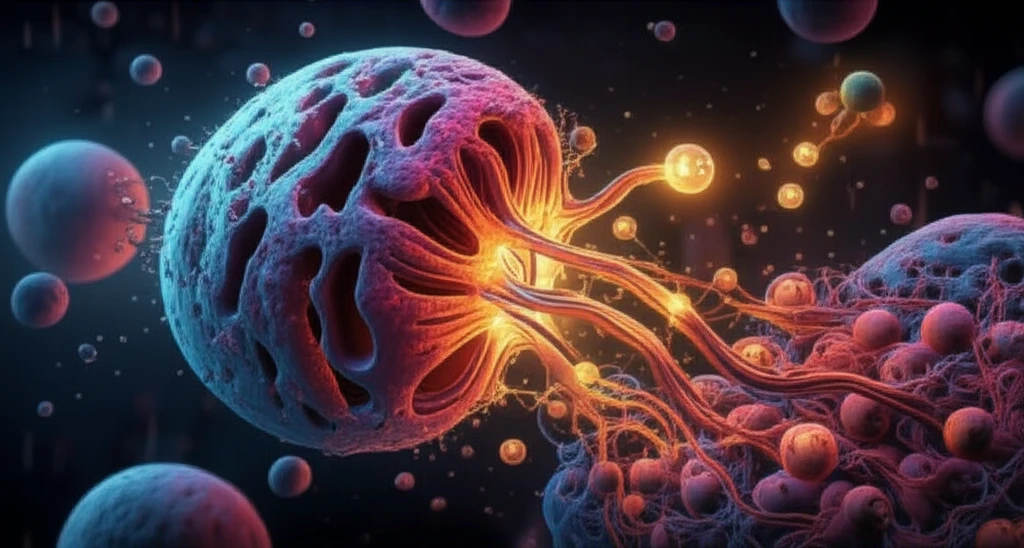
Is Your Golgi Apparatus Trying to Tell You Something? The Surprising Link Between Cellular Stress and LC3 Recruitment
"New research reveals how your cells respond to damage, offering insights into autophagy and potential therapeutic strategies."
In the bustling metropolis of your cells, every organelle has a job. Among them, the Golgi apparatus, a kind of cellular post office, processes and packages proteins for delivery throughout the cell. But what happens when this critical organelle gets damaged? New research is shedding light on a surprising cellular response, one that could have major implications for our understanding of cell health and disease.
A recent study published in Cell Death & Differentiation unveils a novel mechanism by which cells respond to damage in the Golgi apparatus. Researchers discovered that when the Golgi is compromised, cells recruit a protein called LC3 to the site of the injury. LC3 is best known for its role in autophagy, a cellular self-cleaning process that removes damaged components. This discovery suggests a previously unknown link between Golgi damage and the autophagy pathway.
But what does this mean for you? Understanding how cells respond to stress and damage at a fundamental level can open doors to new therapeutic strategies for a range of conditions. From neurodegenerative diseases to cancer, the ability to manipulate cellular responses could revolutionize how we approach treatment.
LC3: Not Just for Autophagy—A First Responder to Golgi Damage?

LC3, or microtubule-associated protein 1A/1B-light chain 3, is a key player in autophagy. Typically, LC3 is found diffusely in the cell's cytoplasm, but when autophagy is triggered, it concentrates at the membranes of autophagosomes, the structures that engulf damaged cell parts for recycling. However, this new research indicates LC3 has a broader role.
- Damage Signals LC3: Various methods of Golgi damage, including laser-induced damage and certain drugs, all triggered LC3 recruitment.
- ATG5 is Essential: The protein ATG5, crucial for autophagy, is also required for LC3 to move to the damaged Golgi.
- No Double Membrane: Unlike typical autophagy, this process doesn't involve the formation of double-membraned autophagosomes.
- Cellular Protection: When cells couldn't recruit LC3 (due to a lack of ATG5), they were more prone to cell death, suggesting this pathway is protective.
What Does This Mean for the Future?
This research opens fascinating new avenues for understanding and treating diseases linked to cellular stress and organelle dysfunction. By identifying the key molecules involved in LC3 recruitment to the Golgi, scientists can develop targeted therapies to enhance this protective pathway. This could potentially slow the progression of neurodegenerative diseases, improve cancer treatment outcomes, and promote healthy aging by bolstering the cell's natural defense mechanisms.
